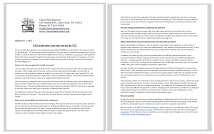From: leoniehaimson@gmail.com <leoniehaimson@gmail.com>
Sent: Monday, December 15, 2025 4:07 PM
To: Panel for Educational Policy <Panel@schools.nyc.gov>; Anita Garcia
<AGarcia141@schools.nyc.gov>;
Adriana Alicea <AAlicea6@schools.nyc.gov>;
Rima Izquierdo <RIzquierdo2@schools.nyc.gov>;
Debra Altman <debra.e.altman@gmail.com>;
Marielle Ali <MAli38@schools.nyc.gov>;
Shirley Aubin <SAubin@schools.nyc.gov>;
@{First=Dienstag; Last=Marjorie; Email=mldienstag@gmail.com}
<mldienstag@gmail.com>;
@{First=Green; Last=Angela; Email=agreen419@gmail.com}
<agreen419@gmail.com>;
@{First=Sapp; Last=Maisha; Email=maishasapp@gmail.com}
<maishasapp@gmail.com>; bparsons.cec10@gmail.com <bparsons.cec10@gmail.com>;
@{First=Faulkner; Last=Gregory; Email=gregfaulkner1@gmail.com}
<gregfaulkner1@gmail.com>;
@{First=Ong; Last=Alan; Email=aong168@gmail.com}
<aong168@gmail.com>; 'Sharon
Odwin' <odwinsharon@gmail.com>;
Amy Fair (PEP) <amy.fair@nyu.edu>;
Alice Ho <AHo2791@schools.nyc.gov>;
Anthony Giordano <AGiordano16@schools.nyc.gov>;
Aaron Bogad <ABogad@schools.nyc.gov>;
'Yadira Jimenez' <yadirajimenez0@gmail.com>;
farajijones@gmail.com <farajijones@gmail.com>; Camille
Casaretti <CCasaretti@schools.nyc.gov>;
@{First=Garcia; Last=Anita; Email=Mrstusky@aol.com}
<Mrstusky@aol.com>; Naveed, Hasan
(PEP) <naveed@cs.columbia.edu>;
Rima Izquierdo <RIzquierdo2@schools.nyc.gov>;
jborelli727@gmail.com <jborelli727@gmail.com>; llai1@comptroller.nyc.gov <llai1@comptroller.nyc.gov>
Cc: David Mantell <DMantell2@schools.nyc.gov>;
Noah Means-simonsen <NMeanssimonsen@schools.nyc.gov>;
Chancellor Melissa Aviles-Ramos <NYCPSChancellor@schools.nyc.gov>;
Info <info@studentprivacymatters.org>
Subject: [EXTERNAL] Please reject the four AI products on the PEP agenda
for Wednesday & take a safety-first approach
Dear PEP members:
Last June, the Chancellor appointed me to an AI Working Group to help develop guidelines and guard posts to ensure the safe use of AI in schools. This is especially critical, given how most AI products data-mine personal student information and commercialize the data to improve their products, which violates our state student privacy law, NY Ed Law 2D.
Thirty-one States and most large districts now have guidelines for the use of AI in schools, but not NY State or New York City.
Yet our Working Group has been stymied, sidelined and stonewalled at every step of the way, and refused the most basic information, including the names of AI products currently used in schools, along with their privacy policies.
Much of the research on AI use suggests that it may undermine not only student privacy, but also their cognitive development, critical thinking, creativity, and collaborative skills, weakening the human connection that is essential to a quality education.
More recently, the rapid expansion of AI has led to a surge in electricity use and prices, and a sharp increase in the use of fossil fuels that pose a special threat to the global climate.
Both Kiddom and Khan Academy AI products have been found to convey factual errors; and EPS collects and processes student voices, which are considered such sensitive biometric data that the state has advised parent input prior to its use.
Three of these four AI vendors and their products on the PEP agenda were already voted down just two months ago, at the October PEP meeting. It is unwise and irresponsible to adopt additional AI products without rigorous protections in place.
I urge you to reject these contracts, rather than rush to approve them in a last minute push, before the new Mayor can take office, who will hopefully adopt a more precautionary, safety-first approach.
Thank you for your consideration,
Leonie Haimson, Parent Coalition for Student Privacy
















